 Northern Pulp has announced it will initiate a court-supervised sales process of its assets after it confirmed it wasn’t able to secure funding for a new mill project. In a news release Monday night, the insolvent company said the decision follows completion of a comprehensive feasibility study that concluded Northern Pulp could not achieve the 14 per cent internal rate of return required in a settlement agreement with the province to develop a bleached softwood kraft pulp mill and bioproducts hub near Liverpool, N.S. “Northern Pulp is thankful for the support and collaboration of the Province of Nova Scotia and local stakeholders throughout the feasibility study,” the company said in the release. Nova Scotia’s minister of natural resources said Northern Pulp’s announcement was “not the outcome we had hoped for.”
Northern Pulp has announced it will initiate a court-supervised sales process of its assets after it confirmed it wasn’t able to secure funding for a new mill project. In a news release Monday night, the insolvent company said the decision follows completion of a comprehensive feasibility study that concluded Northern Pulp could not achieve the 14 per cent internal rate of return required in a settlement agreement with the province to develop a bleached softwood kraft pulp mill and bioproducts hub near Liverpool, N.S. “Northern Pulp is thankful for the support and collaboration of the Province of Nova Scotia and local stakeholders throughout the feasibility study,” the company said in the release. Nova Scotia’s minister of natural resources said Northern Pulp’s announcement was “not the outcome we had hoped for.”
Related content:
- CTV News – Northern Pulp to sell off assets five years after N.S. mill closed
- Natural Resources Nova Scotia – Minister’s Statement Northern Pulp Announcement
- The Chronicle Herald – Northern Pulp scuttles plans for new pulp mill

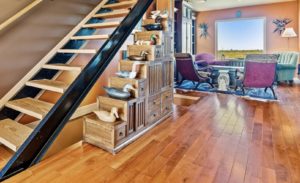 As we’re now well into 2025, the hardwood flooring industry continues to evolve in response to broader shifts in how people design and inhabit their spaces. From residential builds to commercial interiors, there’s a growing appetite for natural materials that offer both durability and design versatility—and wood remains a standout. With its timeless appeal and ability to suit a wide range of design aesthetics, it continues to be a foundational material in interior architecture. A key trend gaining traction is the use of tactile, textured finishes. Glossy surfaces are making way for more organic aesthetics, like wire-brushed, matte or hand-scraped textures that bring warmth and visual depth to a room. These finishes complement today’s more relaxed and natural design styles and offer practical benefits, like helping to conceal everyday wear in high-traffic environments.
As we’re now well into 2025, the hardwood flooring industry continues to evolve in response to broader shifts in how people design and inhabit their spaces. From residential builds to commercial interiors, there’s a growing appetite for natural materials that offer both durability and design versatility—and wood remains a standout. With its timeless appeal and ability to suit a wide range of design aesthetics, it continues to be a foundational material in interior architecture. A key trend gaining traction is the use of tactile, textured finishes. Glossy surfaces are making way for more organic aesthetics, like wire-brushed, matte or hand-scraped textures that bring warmth and visual depth to a room. These finishes complement today’s more relaxed and natural design styles and offer practical benefits, like helping to conceal everyday wear in high-traffic environments.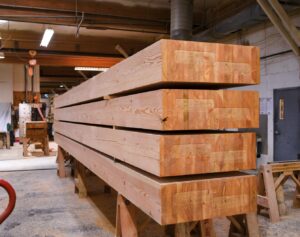 British Columbia remains at the forefront of mass timber design and implementation globally. The province has the highest number of mass timber buildings per capita of any other place in North America, and leads the country with more than 285 mass timber buildings. B.C.’s Mass Timber Action Plan has driven the expansion of mass timber construction, manufacturing, and workforce development across the province. This has increased the number of mass timber buildings and positioned B.C. as a critical exporter of knowledge and products to international markets. Metrics such as overall building count, advancements in carbon reduction, and the adoption of encapsulated mass timber construction (EMTC) standards in other regions all reflect our sustained leadership. Eric Andreasen, the vice-president of marketing and sales at Adera Development, spoke to Tanya Martins of Construction Canada and shed light on how B.C. is on its way to becoming the leader in mass timber development globally.
British Columbia remains at the forefront of mass timber design and implementation globally. The province has the highest number of mass timber buildings per capita of any other place in North America, and leads the country with more than 285 mass timber buildings. B.C.’s Mass Timber Action Plan has driven the expansion of mass timber construction, manufacturing, and workforce development across the province. This has increased the number of mass timber buildings and positioned B.C. as a critical exporter of knowledge and products to international markets. Metrics such as overall building count, advancements in carbon reduction, and the adoption of encapsulated mass timber construction (EMTC) standards in other regions all reflect our sustained leadership. Eric Andreasen, the vice-president of marketing and sales at Adera Development, spoke to Tanya Martins of Construction Canada and shed light on how B.C. is on its way to becoming the leader in mass timber development globally.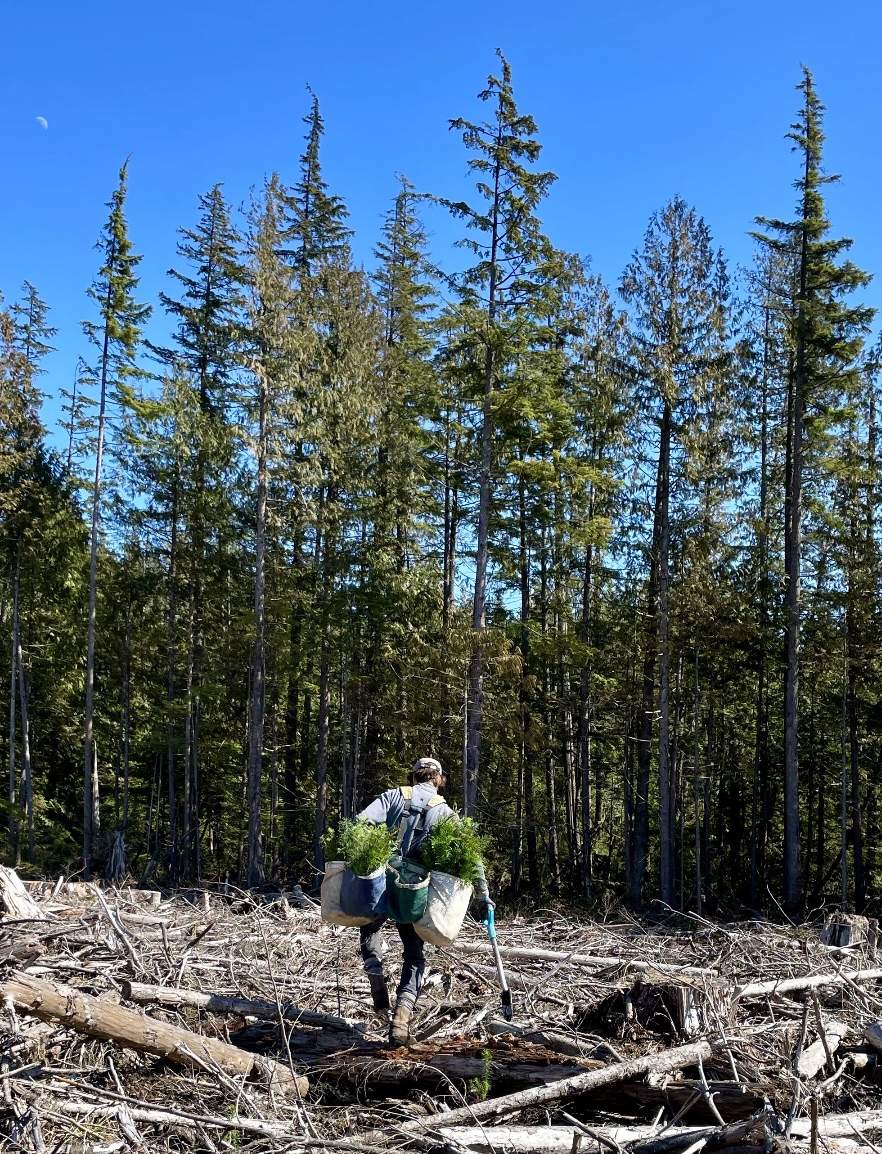 It is estimated that 130 million trees in the Tłı̨chǫ region alone were burned in the devastating 2023 fires. An ambitions new reforestation project is taking on a unprecedented initiative to plant over 1 million trees as part of a six-year plan to plant 13 million trees to bring back the forest. The Tłı̨chǫ Government is holding a special opening ceremony tomorrow at the Behchokǫ̀ Culture Centre at 10:00 a.m. in celebration of the launch of their major reforestation project. “This will mark the beginning of the largest reforestation effort ever undertaken in the Northwest Territories,” said Paul Cressman, who is working with the Tłı̨chǫ government on the new reforestation project. Over the summer, 1.4 million trees will be planted around Behchokǫ̀, Russell Lake, and James Lake. Using locally harvested seeds, the tree planting is “the first step” in a six-year plan to plant 13 million trees across Tłı̨chǫ lands.
It is estimated that 130 million trees in the Tłı̨chǫ region alone were burned in the devastating 2023 fires. An ambitions new reforestation project is taking on a unprecedented initiative to plant over 1 million trees as part of a six-year plan to plant 13 million trees to bring back the forest. The Tłı̨chǫ Government is holding a special opening ceremony tomorrow at the Behchokǫ̀ Culture Centre at 10:00 a.m. in celebration of the launch of their major reforestation project. “This will mark the beginning of the largest reforestation effort ever undertaken in the Northwest Territories,” said Paul Cressman, who is working with the Tłı̨chǫ government on the new reforestation project. Over the summer, 1.4 million trees will be planted around Behchokǫ̀, Russell Lake, and James Lake. Using locally harvested seeds, the tree planting is “the first step” in a six-year plan to plant 13 million trees across Tłı̨chǫ lands.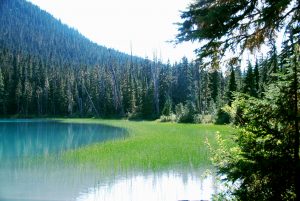 A report from the Nelson-based organization Save What’s Left calls on the provincial government to revamp BC Timber Sales and give it an environmental stewardship mandate. The 50-page report titled Public Forest, Public Trust alleges that BCTS logs old growth forests, disturbs watersheds and interferes with wildlife corridors. BCTS is an independent organization within the Ministry of Forests that develops Crown timber for auction. BCTS plans and designs logging operations and builds logging roads, then sells the timber to the highest bidder. The document lays out 24 such allegations, stating they are based on field verification by Save What’s Left, on satellite time-lapse imagery, and on conversations with forest professionals and forest workers. “This paper both outlines the myriad of problems with how BC Timber Sales operates and presents a new path forward,” writes prominent environmentalist David Suzuki in his introduction to the report. “What we need now is courage by leaders to walk that path.”
A report from the Nelson-based organization Save What’s Left calls on the provincial government to revamp BC Timber Sales and give it an environmental stewardship mandate. The 50-page report titled Public Forest, Public Trust alleges that BCTS logs old growth forests, disturbs watersheds and interferes with wildlife corridors. BCTS is an independent organization within the Ministry of Forests that develops Crown timber for auction. BCTS plans and designs logging operations and builds logging roads, then sells the timber to the highest bidder. The document lays out 24 such allegations, stating they are based on field verification by Save What’s Left, on satellite time-lapse imagery, and on conversations with forest professionals and forest workers. “This paper both outlines the myriad of problems with how BC Timber Sales operates and presents a new path forward,” writes prominent environmentalist David Suzuki in his introduction to the report. “What we need now is courage by leaders to walk that path.”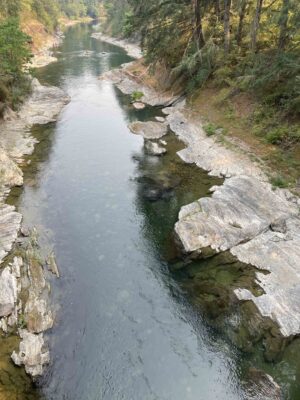 Clear-cutting can make catastrophic floods 18 times more frequent with effects lasting more than 40 years, according to a new UBC study. In one watershed, these extreme floods also became more than twice as large, turning a once-in-70-years event into something that now happens every nine. “This research challenges conventional thinking about forest management’s impact on flooding,” said senior author Dr. Younes Alila, a hydrologist in the UBC faculty of forestry. “We hope the industry and policymakers will take note of the findings, which show that it matters not only how much forest you remove but also where, how and under what conditions.” The UBC-led study draws on one of the world’s longest-running forest experiments at the Coweeta Hydrologic Laboratory in North Carolina and is published in the
Clear-cutting can make catastrophic floods 18 times more frequent with effects lasting more than 40 years, according to a new UBC study. In one watershed, these extreme floods also became more than twice as large, turning a once-in-70-years event into something that now happens every nine. “This research challenges conventional thinking about forest management’s impact on flooding,” said senior author Dr. Younes Alila, a hydrologist in the UBC faculty of forestry. “We hope the industry and policymakers will take note of the findings, which show that it matters not only how much forest you remove but also where, how and under what conditions.” The UBC-led study draws on one of the world’s longest-running forest experiments at the Coweeta Hydrologic Laboratory in North Carolina and is published in the 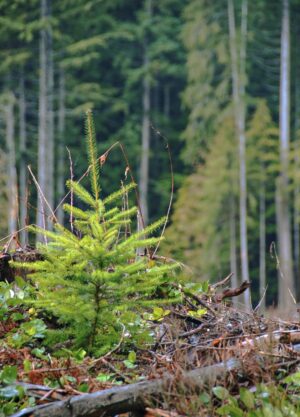 With the wildfire season intensifying in recent years, post-wildfire restoration has become increasingly critical. A Vancouver tech company drawing investor attention says it has an answer for not only replanting trees, but helping to rebuild forests that are more resilient to future fires. Veritree Technology Inc. is a platform that uses ecological data and monitoring tools to support tree planting, tracking and reporting. “Today, areas that historically wouldn’t have burned from wildfires are actually burning much hotter. At times, that burns the seed stock that would otherwise naturally regenerate after a wildfire,” said Derrick Emsley, CEO and co-founder of Veritree. He said that without intervention, deciduous species could grow back fast, crowding out the chance for a mature, healthy natural forest to regenerate, which leaves the area more vulnerable to wildfires in the future.
With the wildfire season intensifying in recent years, post-wildfire restoration has become increasingly critical. A Vancouver tech company drawing investor attention says it has an answer for not only replanting trees, but helping to rebuild forests that are more resilient to future fires. Veritree Technology Inc. is a platform that uses ecological data and monitoring tools to support tree planting, tracking and reporting. “Today, areas that historically wouldn’t have burned from wildfires are actually burning much hotter. At times, that burns the seed stock that would otherwise naturally regenerate after a wildfire,” said Derrick Emsley, CEO and co-founder of Veritree. He said that without intervention, deciduous species could grow back fast, crowding out the chance for a mature, healthy natural forest to regenerate, which leaves the area more vulnerable to wildfires in the future.
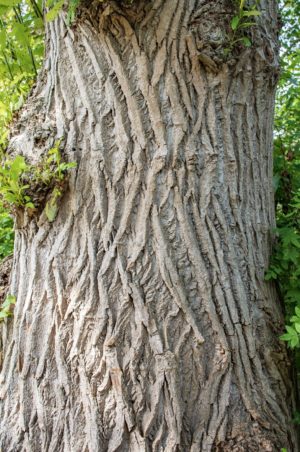 Floating fluff? Summer snow? Cotton balls? If you’ve been noticing more of that white stuff floating around the N.W.T. this summer, you’re not alone. “One thing I noticed is a buildup of that stuff in my yard,” Yellowknifer Justin Grandjambe said. “When it’s windy it kind of gathers in corners and stuff … almost looks like a little bit of snow.” Turns out, that fluff is from trees dispelling their seeds. It’s a stress response from the poplars, aspen and willows reacting to the dry conditions from the past few years, according to the N.W.T.’s department of Environment and Climate Change (ECC). Within each fluff ball is a bunch of tiny seeds. The department’s experts couldn’t say how much more “fluff” there is this year compared to other years. That’s something that might also vary depending on where in the territory you’re looking.
Floating fluff? Summer snow? Cotton balls? If you’ve been noticing more of that white stuff floating around the N.W.T. this summer, you’re not alone. “One thing I noticed is a buildup of that stuff in my yard,” Yellowknifer Justin Grandjambe said. “When it’s windy it kind of gathers in corners and stuff … almost looks like a little bit of snow.” Turns out, that fluff is from trees dispelling their seeds. It’s a stress response from the poplars, aspen and willows reacting to the dry conditions from the past few years, according to the N.W.T.’s department of Environment and Climate Change (ECC). Within each fluff ball is a bunch of tiny seeds. The department’s experts couldn’t say how much more “fluff” there is this year compared to other years. That’s something that might also vary depending on where in the territory you’re looking.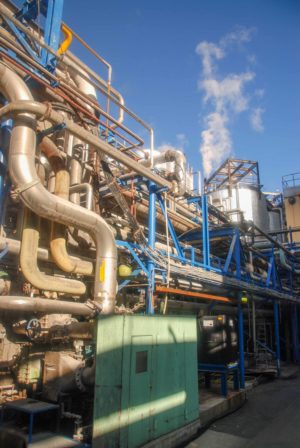 With the announcement that there won’t be a new kraft pulp mill being built in Liverpool, the long and expensive Northern Pulp saga begins winding down. Here’s the little we know about what Northern Pulp and its associated companies are worth, who’s likely to get paid and what the taxpayer might be on the hook for. When it filed for creditor protection in 2020, Northern Pulp estimated it had $254 million in assets and $311,019,464 in liabilities. But half of those assets – what it estimated as $130 million worth of equipment and land associated with a cold-idled pulp mill at Abercrombie Point – comes with a large and undetermined liability for whoever gets stuck with the cleanup costs. How much the taxpayer ends up on the hook both for unpaid loans to Northern Pulp and cleanup of the mill site will rely on how much gets paid for the companies’ assets.
With the announcement that there won’t be a new kraft pulp mill being built in Liverpool, the long and expensive Northern Pulp saga begins winding down. Here’s the little we know about what Northern Pulp and its associated companies are worth, who’s likely to get paid and what the taxpayer might be on the hook for. When it filed for creditor protection in 2020, Northern Pulp estimated it had $254 million in assets and $311,019,464 in liabilities. But half of those assets – what it estimated as $130 million worth of equipment and land associated with a cold-idled pulp mill at Abercrombie Point – comes with a large and undetermined liability for whoever gets stuck with the cleanup costs. How much the taxpayer ends up on the hook both for unpaid loans to Northern Pulp and cleanup of the mill site will rely on how much gets paid for the companies’ assets.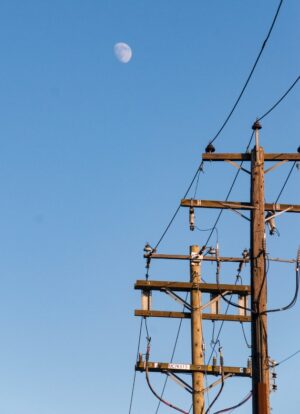 Montreal’s tree-lined streets are one of the city’s greatest assets — they clean the air, add bursts of green to the scenery and help push the concrete background. But when storms hit, those trees clash with the urban landscape and are a major cause of power outages. That’s why Hydro-Québec is now using new technologies to find a way for trees to coexist with its power lines. “We’re trying to make a digital twin of the network to see if there are interactions between the tree and the network,” said Étienne Langdeau, director of vegetation management for Hydro-Québec. Artificial intelligence then measures the trees before and after a weather event, like a windstorm, to see which branches broke. The algorithm uses this information to get better at predicting which branches are most likely to snap. In turn, technicians can preemptively cut these branches before they become a problem.
Montreal’s tree-lined streets are one of the city’s greatest assets — they clean the air, add bursts of green to the scenery and help push the concrete background. But when storms hit, those trees clash with the urban landscape and are a major cause of power outages. That’s why Hydro-Québec is now using new technologies to find a way for trees to coexist with its power lines. “We’re trying to make a digital twin of the network to see if there are interactions between the tree and the network,” said Étienne Langdeau, director of vegetation management for Hydro-Québec. Artificial intelligence then measures the trees before and after a weather event, like a windstorm, to see which branches broke. The algorithm uses this information to get better at predicting which branches are most likely to snap. In turn, technicians can preemptively cut these branches before they become a problem. More than a quarter of firefighting positions at the United States Forest Service (USFS) remain vacant, according to internal data reviewed by the Guardian, creating staffing shortages as extreme conditions fuel dozens of blazes across the US. The data paints a dangerously different picture than the one offered by Tom Schultz, the chief of the USFS, who has repeatedly assured lawmakers and the public that the agency is fully prepared for the onslaught in fire activity expected through this year. It’s already been busy. So far this year there have been more than 41,000 wildfires – an amount nearly 31% higher than the ten-year average. “In terms of firefighting capacity we are there,” Schultz said during a Senate committee hearing on 10 July, claiming the USFS had hit 99% of hiring goals. He repeated the claim multiple times.
More than a quarter of firefighting positions at the United States Forest Service (USFS) remain vacant, according to internal data reviewed by the Guardian, creating staffing shortages as extreme conditions fuel dozens of blazes across the US. The data paints a dangerously different picture than the one offered by Tom Schultz, the chief of the USFS, who has repeatedly assured lawmakers and the public that the agency is fully prepared for the onslaught in fire activity expected through this year. It’s already been busy. So far this year there have been more than 41,000 wildfires – an amount nearly 31% higher than the ten-year average. “In terms of firefighting capacity we are there,” Schultz said during a Senate committee hearing on 10 July, claiming the USFS had hit 99% of hiring goals. He repeated the claim multiple times.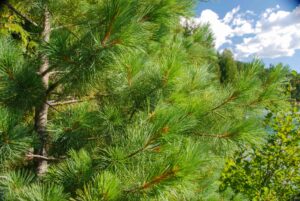 After months of deliberation, a years-old vision to restore local control of some of Pacific and Wahkiakum counties’ most productive timberlands is a step closer to becoming a reality. Last Tuesday, representatives from the Columbia Land Trust presented to both sets of commissioners a near-complete draft of the charter for the Upper Grays River Community Forest. The document lays out the legal framework and governance structure for a working forest in the upper Grays River watershed, which will straddle the boundary between the two counties. “The purpose… is to provide a legal entity… to undertake, assist with and otherwise facilitate the acquisition, ownership, maintenance, harvest, and management of a community forest or forests within Pacific County and Wahkiakum County to provide economic, environmental and community benefits to the public,” the charter’s fourth article reads.
After months of deliberation, a years-old vision to restore local control of some of Pacific and Wahkiakum counties’ most productive timberlands is a step closer to becoming a reality. Last Tuesday, representatives from the Columbia Land Trust presented to both sets of commissioners a near-complete draft of the charter for the Upper Grays River Community Forest. The document lays out the legal framework and governance structure for a working forest in the upper Grays River watershed, which will straddle the boundary between the two counties. “The purpose… is to provide a legal entity… to undertake, assist with and otherwise facilitate the acquisition, ownership, maintenance, harvest, and management of a community forest or forests within Pacific County and Wahkiakum County to provide economic, environmental and community benefits to the public,” the charter’s fourth article reads.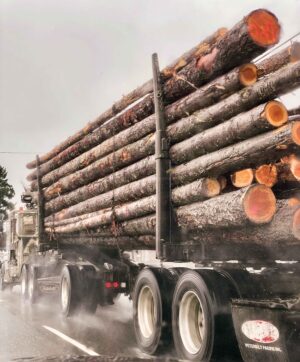 On March 1, 2025, President Trump issued an executive order directing the Secretaries of Agriculture and the Interior to develop plans to increase timber production on federal lands. The order was motivated by two stated priorities: expanding the timber supply and addressing rising wildfire risks. The US Forest Service has responded with a goal of increasing timber offered for sale by 25 percent over the next four to five years. This report puts the Trump administration’s actions into context by reviewing the history of harvest from federal lands and evaluating current forest inventories and treatment needs. It asks: What would be the effect on wildfire risk if federal land management agencies increased harvests by 25 percent? Opportunities for harvests that successfully mitigate risk may be limited by the absence of active timber markets, the availability of a qualified workforce, and the economics of fuel removals.
On March 1, 2025, President Trump issued an executive order directing the Secretaries of Agriculture and the Interior to develop plans to increase timber production on federal lands. The order was motivated by two stated priorities: expanding the timber supply and addressing rising wildfire risks. The US Forest Service has responded with a goal of increasing timber offered for sale by 25 percent over the next four to five years. This report puts the Trump administration’s actions into context by reviewing the history of harvest from federal lands and evaluating current forest inventories and treatment needs. It asks: What would be the effect on wildfire risk if federal land management agencies increased harvests by 25 percent? Opportunities for harvests that successfully mitigate risk may be limited by the absence of active timber markets, the availability of a qualified workforce, and the economics of fuel removals. An unusual alliance of Republican lawmakers and animal rights advocates, together with others, is creating storm clouds for a plan to protect one threatened owl by killing a more common one. Last August, the U.S. Fish and Wildlife Service approved a plan to shoot roughly 450,000 barred owls in California, Oregon and Washington over three decades. The barred owls have been out-competing imperiled northern spotted owls in the Pacific Northwest, as well as California spotted owls, pushing them out of their territory. Supporters of the approach — including conservation groups and prominent scientists — believe the cull is necessary to avert disastrous consequences for the spotted owls. Last month, The Times has found, federal officials canceled three owl-related grants to the California Department of Fish and Wildlife totaling roughly $1.1 million, including one study that would remove barred owls from over 192,000 acres in Mendocino and Sonoma counties.
An unusual alliance of Republican lawmakers and animal rights advocates, together with others, is creating storm clouds for a plan to protect one threatened owl by killing a more common one. Last August, the U.S. Fish and Wildlife Service approved a plan to shoot roughly 450,000 barred owls in California, Oregon and Washington over three decades. The barred owls have been out-competing imperiled northern spotted owls in the Pacific Northwest, as well as California spotted owls, pushing them out of their territory. Supporters of the approach — including conservation groups and prominent scientists — believe the cull is necessary to avert disastrous consequences for the spotted owls. Last month, The Times has found, federal officials canceled three owl-related grants to the California Department of Fish and Wildlife totaling roughly $1.1 million, including one study that would remove barred owls from over 192,000 acres in Mendocino and Sonoma counties.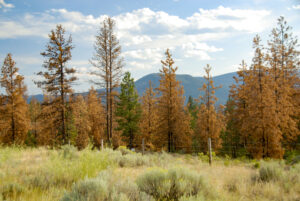 In 2023 and 2024, the hottest years on record, more than 78 million acres of forests burned around the globe. The fires sent veils of smoke and several billion tons of carbon dioxide into the atmosphere, subjecting millions of people to poor air quality. Extreme forest-fire years are becoming more common because of climate change, new research suggests. Boreal forests lost more than two times the canopy area in 2023-24 compared with the period between 2002 and 2022, the study found. Tropical forests saw three times as much loss, and North American forests lost nearly four times as much canopy, mostly because of Canada’s wildfires. Significant losses were in remote forests, far from human activities. That isolation suggests fires are increasing primarily because of climate change, said Calum Cunningham, a fire geographer at the University of Tasmania who was not involved with the study. “Chronic changes in climate are making these forests more conducive to burning,” Dr. Cunningham said. [a paid subscription is required to read this article]
In 2023 and 2024, the hottest years on record, more than 78 million acres of forests burned around the globe. The fires sent veils of smoke and several billion tons of carbon dioxide into the atmosphere, subjecting millions of people to poor air quality. Extreme forest-fire years are becoming more common because of climate change, new research suggests. Boreal forests lost more than two times the canopy area in 2023-24 compared with the period between 2002 and 2022, the study found. Tropical forests saw three times as much loss, and North American forests lost nearly four times as much canopy, mostly because of Canada’s wildfires. Significant losses were in remote forests, far from human activities. That isolation suggests fires are increasing primarily because of climate change, said Calum Cunningham, a fire geographer at the University of Tasmania who was not involved with the study. “Chronic changes in climate are making these forests more conducive to burning,” Dr. Cunningham said. [a paid subscription is required to read this article] The days of clear-cutting the Tongass National Forest are over, with little chance of reviving the past. The Alaska Forest Association, tribal members, and environmentalists say a new future must be charted. Since the Clinton administration implemented the Roadless Rule in 2001, construction of new roads in wild areas of most national forests has been blocked. With no more roads being built and few companies willing to barge out the wood, it is difficult to imagine the return of mass logging. Timber operators expected to harvest 46 million board feet per year, a mix of young and old-growth, based on the 2016 Tongass Land and Resource Management plan. Viking Lumber Company in Klawock and Alcan Timber in Ketchikan acknowledge the time needed to transition to young-growth harvesting. “Threads of the Tongass” is a series of stories that explore how lives in Southeast Alaska are interwoven with the Tongass National Forest during a time of political, cultural and environmental change.
The days of clear-cutting the Tongass National Forest are over, with little chance of reviving the past. The Alaska Forest Association, tribal members, and environmentalists say a new future must be charted. Since the Clinton administration implemented the Roadless Rule in 2001, construction of new roads in wild areas of most national forests has been blocked. With no more roads being built and few companies willing to barge out the wood, it is difficult to imagine the return of mass logging. Timber operators expected to harvest 46 million board feet per year, a mix of young and old-growth, based on the 2016 Tongass Land and Resource Management plan. Viking Lumber Company in Klawock and Alcan Timber in Ketchikan acknowledge the time needed to transition to young-growth harvesting. “Threads of the Tongass” is a series of stories that explore how lives in Southeast Alaska are interwoven with the Tongass National Forest during a time of political, cultural and environmental change.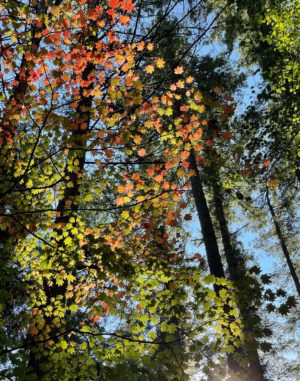 A new tool sheds light on the impact of wildfires across California. The
A new tool sheds light on the impact of wildfires across California. The 
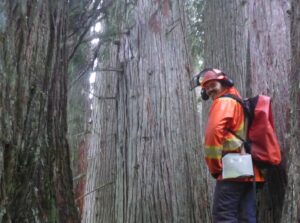 New federal laws could “lock up” timber land for decades at a time, raising concerns big companies could elbow out smaller competitors and that timber revenue for counties could be delayed for years. President Donald Trump’s tax cuts and spending bill, which he signed into law earlier this month, increases the length of federal logging contracts to a minimum of 20 years. The contracts, which determine how long a logging company has to harvest on the land under contract, have typically averaged three to four years, and the longest contracts extended up to 10 years. The concern raised by a coalition of timber companies and local governments is that companies could sign long-term contracts, then wait years to harvest trees. “If the timber volume is tied up in these 20 year contracts,” Doug Robertson, executive director of the Association of O&C counties, said, “that volume then is no longer available to generate revenue for the counties and the state.”
New federal laws could “lock up” timber land for decades at a time, raising concerns big companies could elbow out smaller competitors and that timber revenue for counties could be delayed for years. President Donald Trump’s tax cuts and spending bill, which he signed into law earlier this month, increases the length of federal logging contracts to a minimum of 20 years. The contracts, which determine how long a logging company has to harvest on the land under contract, have typically averaged three to four years, and the longest contracts extended up to 10 years. The concern raised by a coalition of timber companies and local governments is that companies could sign long-term contracts, then wait years to harvest trees. “If the timber volume is tied up in these 20 year contracts,” Doug Robertson, executive director of the Association of O&C counties, said, “that volume then is no longer available to generate revenue for the counties and the state.”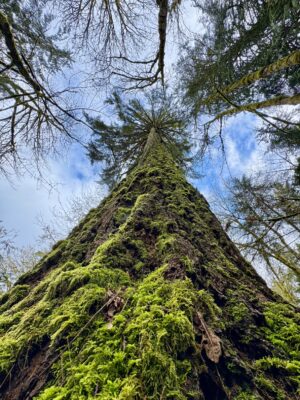 A new analysis reveals that many of Eastern Oregon’s ancient trees are dying at an alarming rate. The study, conducted by a team led by James Johnston, an assistant research professor at the University of Oregon, found that between 2012 and 2023, a quarter of trees over 300 years old in roadless areas of the Malheur National Forest had died. Johnston attributed the decline to a combination of drought, insect infestations, and competition with younger trees. “It’s sad to see so many old trees dying,” Johnston said. He emphasized the need for active management to protect these ancient trees, particularly in the dry forests of Eastern and Southern Oregon. The study, published in the journal
A new analysis reveals that many of Eastern Oregon’s ancient trees are dying at an alarming rate. The study, conducted by a team led by James Johnston, an assistant research professor at the University of Oregon, found that between 2012 and 2023, a quarter of trees over 300 years old in roadless areas of the Malheur National Forest had died. Johnston attributed the decline to a combination of drought, insect infestations, and competition with younger trees. “It’s sad to see so many old trees dying,” Johnston said. He emphasized the need for active management to protect these ancient trees, particularly in the dry forests of Eastern and Southern Oregon. The study, published in the journal 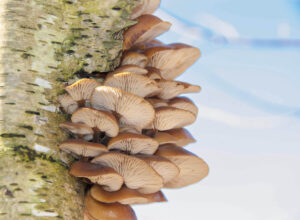 For a few years, foragers and fungi enthusiasts around the Midwest have been seeing something yellow. The butter-colored flushes of the golden oyster mushroom are difficult to miss. They bloom on dead or decaying trees, and they have become profuse in states around the Great Lakes. The fungi, which are native to Asia, are good to eat and easy to grow. But a new study shows that they may also be sapping the resources of native mushrooms. And their footprint is spreading fast. “I don’t think anyone would hesitate to call it invasive,” said Aishwarya Veerabahu, a mycologist and doctoral student at the University of Wisconsin-Madison and an author of the
For a few years, foragers and fungi enthusiasts around the Midwest have been seeing something yellow. The butter-colored flushes of the golden oyster mushroom are difficult to miss. They bloom on dead or decaying trees, and they have become profuse in states around the Great Lakes. The fungi, which are native to Asia, are good to eat and easy to grow. But a new study shows that they may also be sapping the resources of native mushrooms. And their footprint is spreading fast. “I don’t think anyone would hesitate to call it invasive,” said Aishwarya Veerabahu, a mycologist and doctoral student at the University of Wisconsin-Madison and an author of the 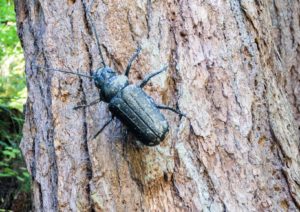 On a day in early June, state forester Will Phifer carried a pill bottle-orange canister into a southeastern Oklahoma forest, tied it to a shaded tree trunk and left. The area was a confirmed spot for a growing population of tree-killing beetles called emerald ash borers, which likely seeped into the state from the east. The container held what scientists hope is a solution to controlling the harmful pest: more than 100 minuscule parasitoid wasp eggs. “These emerald ash borer eggs are laid on the outer bark of the tree,” Dieter Rudolph, forest health specialist for Oklahoma Forestry Services, said. “So, this wasp will go find them and basically inject an egg into the emerald ash borer egg.” Instead of producing an emerald ash borer larva, the host egg will hatch a new wasp.
On a day in early June, state forester Will Phifer carried a pill bottle-orange canister into a southeastern Oklahoma forest, tied it to a shaded tree trunk and left. The area was a confirmed spot for a growing population of tree-killing beetles called emerald ash borers, which likely seeped into the state from the east. The container held what scientists hope is a solution to controlling the harmful pest: more than 100 minuscule parasitoid wasp eggs. “These emerald ash borer eggs are laid on the outer bark of the tree,” Dieter Rudolph, forest health specialist for Oklahoma Forestry Services, said. “So, this wasp will go find them and basically inject an egg into the emerald ash borer egg.” Instead of producing an emerald ash borer larva, the host egg will hatch a new wasp.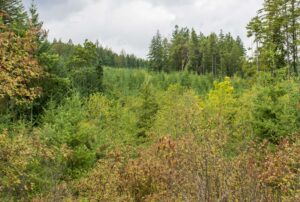 At the southern tip of Europe’s largest river island, the ground falls away into a vast and unexpected vista. From a high, rocky ledge on Khortytsia Island, the view opens on to a sea of swaying young willows and mirrored lagoons. Some of the trees are already many metres tall, but this is a young forest. Just a few years ago, all of it was under water. “This is Velykyi Luh – the Great Meadow,” says Valeriy Babko, a retired history teacher and army veteran, standing on the former reservoir shoreline at Malokaterynivka village. For him, this extraordinary new-old environment represents more than nature alone. “It is an ancient, mythic terrain, woven through Ukrainian folklore,” he says. “Think of all those Cossacks galloping through its valleys of forests so dense the sun barely pierced them.”
At the southern tip of Europe’s largest river island, the ground falls away into a vast and unexpected vista. From a high, rocky ledge on Khortytsia Island, the view opens on to a sea of swaying young willows and mirrored lagoons. Some of the trees are already many metres tall, but this is a young forest. Just a few years ago, all of it was under water. “This is Velykyi Luh – the Great Meadow,” says Valeriy Babko, a retired history teacher and army veteran, standing on the former reservoir shoreline at Malokaterynivka village. For him, this extraordinary new-old environment represents more than nature alone. “It is an ancient, mythic terrain, woven through Ukrainian folklore,” he says. “Think of all those Cossacks galloping through its valleys of forests so dense the sun barely pierced them.”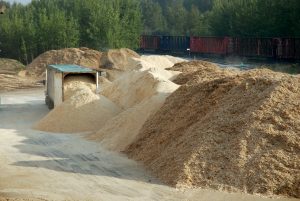 Five Eastern Ontario companies – three of them in Renfrew-Nipissing-Pembroke – will receive just over $9.1 in government funding under the Forest Biomass Program to create new products and expand markets for existing products produced from low quality forest products. The announcement was made Monday morning by MPP Kevin Holland, the Associate Minister of Forestry and Forest Products at one of two Killaloe Wood Products sites in Bonnechere Valley Township, south of Eganville, where landscaping mulch and other biomass products are processed… “These investments support good paying jobs, drive local growth and encourage innovation,” he said. “But today isn’t just about numbers on a page. Behind every dollar are businesses right here in Eganville and in Whitney that form the backbone of our local economy. The forestry sector is the cornerstone of the economic ecosystem that supports every corner of the riding.”
Five Eastern Ontario companies – three of them in Renfrew-Nipissing-Pembroke – will receive just over $9.1 in government funding under the Forest Biomass Program to create new products and expand markets for existing products produced from low quality forest products. The announcement was made Monday morning by MPP Kevin Holland, the Associate Minister of Forestry and Forest Products at one of two Killaloe Wood Products sites in Bonnechere Valley Township, south of Eganville, where landscaping mulch and other biomass products are processed… “These investments support good paying jobs, drive local growth and encourage innovation,” he said. “But today isn’t just about numbers on a page. Behind every dollar are businesses right here in Eganville and in Whitney that form the backbone of our local economy. The forestry sector is the cornerstone of the economic ecosystem that supports every corner of the riding.”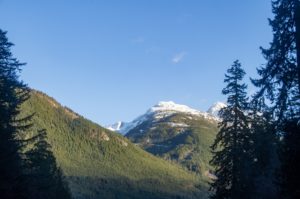 The megabill President Trump signed into law this month is expected to make a major dent in the U.S.’s climate progress, adding significantly more planet-warming emissions to the atmosphere. Models of the legislation that have emerged since its passage earlier this month show U.S. emissions will rise as a result of its implementation. One from climate think tank C2ES found U.S. emissions will be 8 percent more than they would have been otherwise as a result of the package. “An 8% increase in our emissions is … still a massive amount of emissions,” said Brad Townsend, the group’s vice president for policy and outreach. Taking into account all of the efforts to reduce U.S. emissions over the last 20 years, Townsend said, the bill represents “rolling back a third of that progress with a stroke of a pen.” “From an emissions perspective, this bill is a disaster,” he said.
The megabill President Trump signed into law this month is expected to make a major dent in the U.S.’s climate progress, adding significantly more planet-warming emissions to the atmosphere. Models of the legislation that have emerged since its passage earlier this month show U.S. emissions will rise as a result of its implementation. One from climate think tank C2ES found U.S. emissions will be 8 percent more than they would have been otherwise as a result of the package. “An 8% increase in our emissions is … still a massive amount of emissions,” said Brad Townsend, the group’s vice president for policy and outreach. Taking into account all of the efforts to reduce U.S. emissions over the last 20 years, Townsend said, the bill represents “rolling back a third of that progress with a stroke of a pen.” “From an emissions perspective, this bill is a disaster,” he said.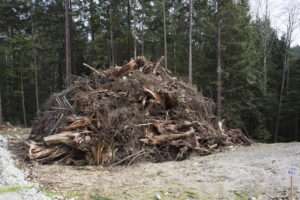 When seeking to make forests more fire resilient, removing fuels from the landscape is a tough task to make cost-effective. Thinning and limbing trees during fuels reduction treatments will sometimes produce marketable timber, but more often will produce small-diameter wood pieces that have traditionally been considered unmarketable. These pieces are typically chipped, masticated, or pile burned, and have long been considered ‘wood waste’. California researchers, industry leaders, and private forest landowners have been looking at ways to transform forest wood waste, particularly in wildfire-prone areas, into sustainable products. Utilizing forest biomass for building materials, soil amendments, and clean energy is a key strategy to economically incentivize improving forest conditions and can address both public and private industry needs. The state has also been making moves to decrease greenhouse gas emissions and aims to eliminate emissions entirely by 2045.
When seeking to make forests more fire resilient, removing fuels from the landscape is a tough task to make cost-effective. Thinning and limbing trees during fuels reduction treatments will sometimes produce marketable timber, but more often will produce small-diameter wood pieces that have traditionally been considered unmarketable. These pieces are typically chipped, masticated, or pile burned, and have long been considered ‘wood waste’. California researchers, industry leaders, and private forest landowners have been looking at ways to transform forest wood waste, particularly in wildfire-prone areas, into sustainable products. Utilizing forest biomass for building materials, soil amendments, and clean energy is a key strategy to economically incentivize improving forest conditions and can address both public and private industry needs. The state has also been making moves to decrease greenhouse gas emissions and aims to eliminate emissions entirely by 2045. 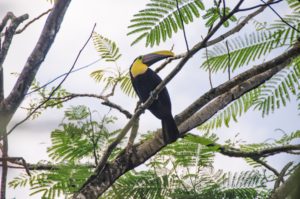 A lot of attention has been paid to how climate change can drive biodiversity loss. Now, MIT researchers have shown the reverse is also true: Reductions in biodiversity can jeopardize one of Earth’s most powerful levers for mitigating climate change. In
A lot of attention has been paid to how climate change can drive biodiversity loss. Now, MIT researchers have shown the reverse is also true: Reductions in biodiversity can jeopardize one of Earth’s most powerful levers for mitigating climate change. In 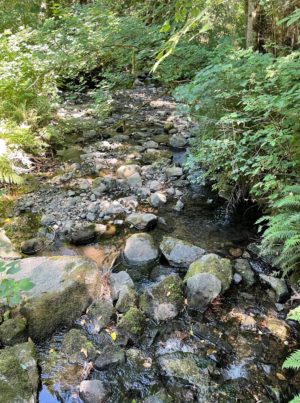 The top United Nations court has ruled that nations are obligated under international law to limit climate change, and countries that don’t act could be held legally responsible for climate damages elsewhere. The decision is a win for many small countries vulnerable to climate impacts, which pushed for the issue to be heard by the International Court of Justice (ICJ). It’s the court’s first major ruling on climate change, but the decision is only advisory, meaning that countries are not legally bound by it. Still, legal experts say it could be a boost for other climate change lawsuits pending in national courts around the world. “It’s really groundbreaking,” says Maria Antonia Tigre, director of Global Climate Change Litigation at Columbia Law School. “I think it will create this new wave of climate litigation.”
The top United Nations court has ruled that nations are obligated under international law to limit climate change, and countries that don’t act could be held legally responsible for climate damages elsewhere. The decision is a win for many small countries vulnerable to climate impacts, which pushed for the issue to be heard by the International Court of Justice (ICJ). It’s the court’s first major ruling on climate change, but the decision is only advisory, meaning that countries are not legally bound by it. Still, legal experts say it could be a boost for other climate change lawsuits pending in national courts around the world. “It’s really groundbreaking,” says Maria Antonia Tigre, director of Global Climate Change Litigation at Columbia Law School. “I think it will create this new wave of climate litigation.” Drax power station is once again the UK’s largest single source of carbon emissions, according to new analysis from think tank Ember. Emissions from the biomass-burning power plant rose to 13.3 million tonnes of CO2 in 2024, a 16% increase from the previous year. Drax biomass power plant has been the UK’s top emitter for the last 10 years running. Drax now emits more than the next four largest polluters combined and more than the six most emitting gas power plants combined. Emissions from the Drax power plant are equivalent to over 10% of the UK’s total transport emissions and nearly 3% of the country’s territorial total. Despite its emissions increase, Drax received around £2 million per day in subsidies in 2024, an average of £10 per household. The power station burned 7.6 million tonnes of wood, 99% of which was imported. Recent investigations have found instances of old growth forests being cut down for this purpose.
Drax power station is once again the UK’s largest single source of carbon emissions, according to new analysis from think tank Ember. Emissions from the biomass-burning power plant rose to 13.3 million tonnes of CO2 in 2024, a 16% increase from the previous year. Drax biomass power plant has been the UK’s top emitter for the last 10 years running. Drax now emits more than the next four largest polluters combined and more than the six most emitting gas power plants combined. Emissions from the Drax power plant are equivalent to over 10% of the UK’s total transport emissions and nearly 3% of the country’s territorial total. Despite its emissions increase, Drax received around £2 million per day in subsidies in 2024, an average of £10 per household. The power station burned 7.6 million tonnes of wood, 99% of which was imported. Recent investigations have found instances of old growth forests being cut down for this purpose.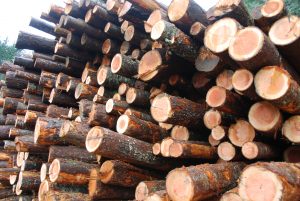 Companies around the world have poured hundreds of millions of dollars into conservation projects in Brazil designed to protect the Amazon rainforest in return for carbon credits offsetting their emissions. Reuters found that many of those projects are profiting people and businesses fined by Brazilian authorities for destroying the rainforest. Reporters analyzed 36 conservation projects in the Brazilian Amazon offering voluntary carbon offsets on the global market’s biggest registries. At least 24 of those involved landowners, developers or forestry firms that have been punished by Brazil’s environmental agency Ibama for their roles in illegal deforestation, Reuters found. The offenses ranged from clear-cutting the rainforest without authorization to transporting felled trees without valid permits and entering false information in a government timber tracking system. Government officials and experts said these infractions reflected the range of roles in the illicit timber trade devouring the rainforest.
Companies around the world have poured hundreds of millions of dollars into conservation projects in Brazil designed to protect the Amazon rainforest in return for carbon credits offsetting their emissions. Reuters found that many of those projects are profiting people and businesses fined by Brazilian authorities for destroying the rainforest. Reporters analyzed 36 conservation projects in the Brazilian Amazon offering voluntary carbon offsets on the global market’s biggest registries. At least 24 of those involved landowners, developers or forestry firms that have been punished by Brazil’s environmental agency Ibama for their roles in illegal deforestation, Reuters found. The offenses ranged from clear-cutting the rainforest without authorization to transporting felled trees without valid permits and entering false information in a government timber tracking system. Government officials and experts said these infractions reflected the range of roles in the illicit timber trade devouring the rainforest.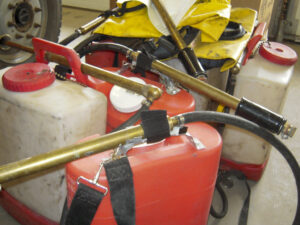 The BC Wildfire Service said Tuesday (July 8) afternoon it’s aware of the wildfire in Washington State 16 km southwest of Northport and is assisting in fire suppression. The location is south of Highway 3 between Christina Lake and Trail, and is being referred to as the “Hope Fire”. The fire was first reported at approximately 1:15 p.m. was estimated later in the afternoon to be 600 acres (243 hectares) in size. BC Wildfire said in a social media post that the US Department of Natural Resources is responding and have resources on-site. BC Wildfire has also deployed airtankers to support wildfire suppression efforts. “At this time there is no threat to the Canada-US border,” it said. Stevens County Emergency Management has announced Level 3 (LEAVE NOW) evacuation orders in the area of Three Pines Youth Camp, according to a statement from Stevens County Emergency Management.
The BC Wildfire Service said Tuesday (July 8) afternoon it’s aware of the wildfire in Washington State 16 km southwest of Northport and is assisting in fire suppression. The location is south of Highway 3 between Christina Lake and Trail, and is being referred to as the “Hope Fire”. The fire was first reported at approximately 1:15 p.m. was estimated later in the afternoon to be 600 acres (243 hectares) in size. BC Wildfire said in a social media post that the US Department of Natural Resources is responding and have resources on-site. BC Wildfire has also deployed airtankers to support wildfire suppression efforts. “At this time there is no threat to the Canada-US border,” it said. Stevens County Emergency Management has announced Level 3 (LEAVE NOW) evacuation orders in the area of Three Pines Youth Camp, according to a statement from Stevens County Emergency Management. Much of Central Canada, Manitoba and Saskatchewan were placed under special air quality statements or warnings on Monday due to smoke from wildfires, as Environment Canada advised residents to limit time outdoors and watch for smoke exposure symptoms. The weather agency said air quality was poor across swaths of Ontario and Quebec as westerly winds brought in smoke from forest fires in the Prairies and northern Ontario. The weather agency also issued air quality warnings in central Saskatchewan and a special statement for much of Manitoba, noting that air quality and visibility due to wildfire smoke can fluctuate over short distances and vary from hour to hour.
Much of Central Canada, Manitoba and Saskatchewan were placed under special air quality statements or warnings on Monday due to smoke from wildfires, as Environment Canada advised residents to limit time outdoors and watch for smoke exposure symptoms. The weather agency said air quality was poor across swaths of Ontario and Quebec as westerly winds brought in smoke from forest fires in the Prairies and northern Ontario. The weather agency also issued air quality warnings in central Saskatchewan and a special statement for much of Manitoba, noting that air quality and visibility due to wildfire smoke can fluctuate over short distances and vary from hour to hour. Fire crews in Northwestern Ontario are monitoring 52 active wildfires across the region after five new blazes were confirmed by Sunday evening. Among the latest is Red Lake 99, burning near Grist Lake, which is the largest of the new fires at 394 hectares and not under control. Red Lake 101 has also drawn attention after crossing into Ontario from Manitoba. That fire is currently 227.5 hectares and continues to burn within Woodland Caribou Provincial Park. Other new fires include Red Lake 98 near Hornby Lake, Red Lake 100 west of Poplar Hill First Nation, and Red Lake 102 northwest of Nechigona Lake. Of those, only Red Lake 100 is under control. Fire officials continue to urge people to respect emergency orders and stay out of restricted zones to support safety and firefighting operations.
Fire crews in Northwestern Ontario are monitoring 52 active wildfires across the region after five new blazes were confirmed by Sunday evening. Among the latest is Red Lake 99, burning near Grist Lake, which is the largest of the new fires at 394 hectares and not under control. Red Lake 101 has also drawn attention after crossing into Ontario from Manitoba. That fire is currently 227.5 hectares and continues to burn within Woodland Caribou Provincial Park. Other new fires include Red Lake 98 near Hornby Lake, Red Lake 100 west of Poplar Hill First Nation, and Red Lake 102 northwest of Nechigona Lake. Of those, only Red Lake 100 is under control. Fire officials continue to urge people to respect emergency orders and stay out of restricted zones to support safety and firefighting operations. Turkey faced a “very risky week” for wildfires, an official said Monday, as blazes across parts of southeast Europe and the Balkans damaged homes and led to a huge firefighting operation that included evacuations. Nearly 100 people face prosecution over the fires in Turkey. Blazes erupted near Bursa, Turkey’s fourth-largest city, over the weekend. A wildfire to the northeast of Bursa had been largely extinguished, but one to the south of the city continued, although its intensity had been “significantly reduced,” Forestry Minister Ibrahim Yumakli told reporters in Ankara. He also said that a fire that has been burning for six days in Karabuk, in northwest Turkey, had also “been reduced in intensity,” and a blaze in Karamanmaras in the south had largely been brought under control.
Turkey faced a “very risky week” for wildfires, an official said Monday, as blazes across parts of southeast Europe and the Balkans damaged homes and led to a huge firefighting operation that included evacuations. Nearly 100 people face prosecution over the fires in Turkey. Blazes erupted near Bursa, Turkey’s fourth-largest city, over the weekend. A wildfire to the northeast of Bursa had been largely extinguished, but one to the south of the city continued, although its intensity had been “significantly reduced,” Forestry Minister Ibrahim Yumakli told reporters in Ankara. He also said that a fire that has been burning for six days in Karabuk, in northwest Turkey, had also “been reduced in intensity,” and a blaze in Karamanmaras in the south had largely been brought under control.